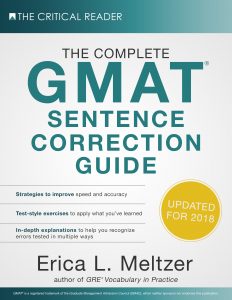Hitachi’s first product was a 5-horsepower electric induction motor, which was initially developed for use in copper mining but soon had become the leading motor in Japan’s growing electric power industry infrastructure.
(A) but soon had become
(B) but soon becoming
(C) but which soon became
(D) but will soon become
(E) but which had soon become
Scroll down for the answer.
Answer: C
Parallel Structure, Verb Tense
The sentence describes two actions in the past: (1) Hitachi’s 5-horsepower electric induction motor was developed for use in copper mining; (2) it became the leading motor in Japan’s growing electric power industry infrastructure. (A) and (E) are incorrect because when a sentence describes two actions in the past, the past perfect (had become) should only be used to refer the action that came first – in these answers, it describes the action that came second. (B) is incorrect because a conjugated verb rather than an –ING word is required after the conjunction but. (D) is incorrect as well because it is normally incorrect to mix past and future in the same sentence: when the future is discussed from the perspective of the past, would + verb should be used instead. In (C), the verb became correctly maintains the established simple past tense.
Note that this is the rare instance in which the pronoun which is correctly used without a comma before it. The reason this construction is acceptable here is that the which in (C) is parallel to the which after motor + comma and serves the same grammatical function. The comma before motor also “applies” to the later which, eliminating what would otherwise be a problematic construction.
